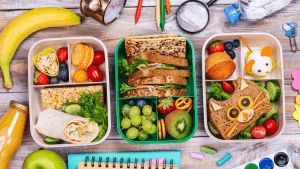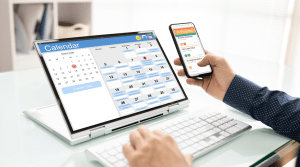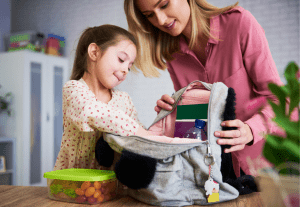 The sun is blazing, the Halloween decorations are in stores, and somehow your child has grown out of everything you swore you only bought a month ago. Do you know what that means?
The sun is blazing, the Halloween decorations are in stores, and somehow your child has grown out of everything you swore you only bought a month ago. Do you know what that means?
It's that time, back to school!
Before you get sad about sending them back, or giggle with delight at the aspect of grocery shopping alone, take a minute to think about any possible hiccups from last school year you needed to address while also remembering what went well and the systems that worked for you. Do you feel a little anxious or are not sure where to start? No worries—we have your back. Here are some quick tips to help you start this school year organized.
1. Meal Prep and Plan Lunches
One of the best ways to ensure success for your family this year is to plan out weekly lunches and dinners and communicate the plans with your family members.
Allow your kids to help prep their lunches and snacks the night before. You can also set up a designated system for older kids to make sure they can quickly locate healthy snacks to pack or to have when they come home.
Check out these Kid-Friendly Snack Ideas to print or use digitally.
2. Use a Large Calendar in the Home
To make sure your whole household is on the same page, post a large calendar in the home with spaces to add notes, grocery lists, and more as a physical reminder of your monthly agenda.
Assign a different color to each family member for an easy way to visualize the month's happenings. This is also a great place to countdown to holidays, special family events, and other items to help your child better grasp time and how to use a calendar.
3. Go Digital
Along with a physical reminder of your agenda and appointments, go digital to have electronic reminders and notifications sent to anyone in the family. This way you can stay on schedule regardless of the device you or your family use.
Various email providers have shared calendars for free like Google and Outlook, or you can check out a specific calendar application like Cozi or TimeTree which offers basic free subscriptions and additional options with paid subscriptions.
4. Post Routine and/or Chores
Setting expectations is a great way to help teach your kids how to create routines and boost positive social behavior. Do you have difficulty deciding what would work well for your kids? Check out this blog on 5 Appropriate Chores for Each Age or use our To-Do Checklist for School-Aged Kids to start a routine at your home.
5. Plan the Night Before
A hot tip for keeping things organized along with meal prepping and planning lunches is to set yourself up for success the night before.
Mornings can be tough with multiple family members getting ready for their day, so hustling to find a Hawaiian shirt, locate a permission slip, or bring in 25 nut-free snacks can set the day up for disaster. Plan everything the night before to ensure you set your household up for success the next day.
6. Book Essential Visits ASAP
Annual check-ups, teeth cleanings, and parent-teacher conferences are unavoidable and must be done. Get ahead of the rush and plan your appointments as soon as you can obtain the school year calendar to maximize time off of school.
Set a reminder to book them at the same time each year. Librarian Lisa says that she schedules her family members' annual check-ups and semi-annual dental cleanings the week of their birthdays and six months after. That way she can easily remember the last time they went in.
When the school year starts, be ready to snag a conference time at an open house or whenever you receive notice that they are open for booking to ensure you get a time that suits your schedule. If none of the times work, do not hesitate to politely ask the teacher for other options as many are willing to accommodate.
7. Create a Space for School Communication
Similar to a physical calendar in the home, or maybe even attached to it, create an area for notes, folders, homework, permission slips, sports forms, and more so that every family member knows where to find and place them when they bring these items home. A magnetic whiteboard is great for this purpose. Attach a few file holders to a wall nearby to store large packets or folders.
8. Designate a Study and Homework Spot
Like creating a place for school forms and communication, set up a designated homework area in your home so that kids have a clear space and place to tackle their assignments.
Creating a place for study allows your child to get into the mindset of completing the task and allows easy access to things they might need. Here is a list of things you might want to consider stocking in your homework spot:
- Paper
- Pencils
- Colored pencils
- Crayons
- Glue stick
- Scissors
- Ruler
- Scrap paper
- Lined paper
- Construction paper
- Dictionary
- Timer
- Fidgets
- Small dry erase board and markers
- Workbooks
- Library books
Another tip is to allow your child to decorate the space with their favorite characters or animals so they feel cozy in their spot. Don't have a lot of room to make a dedicated area or have multiple kids? Check out this idea to create a space on a kitchen or dining room table that can easily fold away when not in use by using a tri-fold project board.
Looking for more ideas? Take a look at this Creativebug Back to School Organizing Crafts video with your Canton Public Library card.



Add a comment to: 8 Tips to Stay Organized This School Year